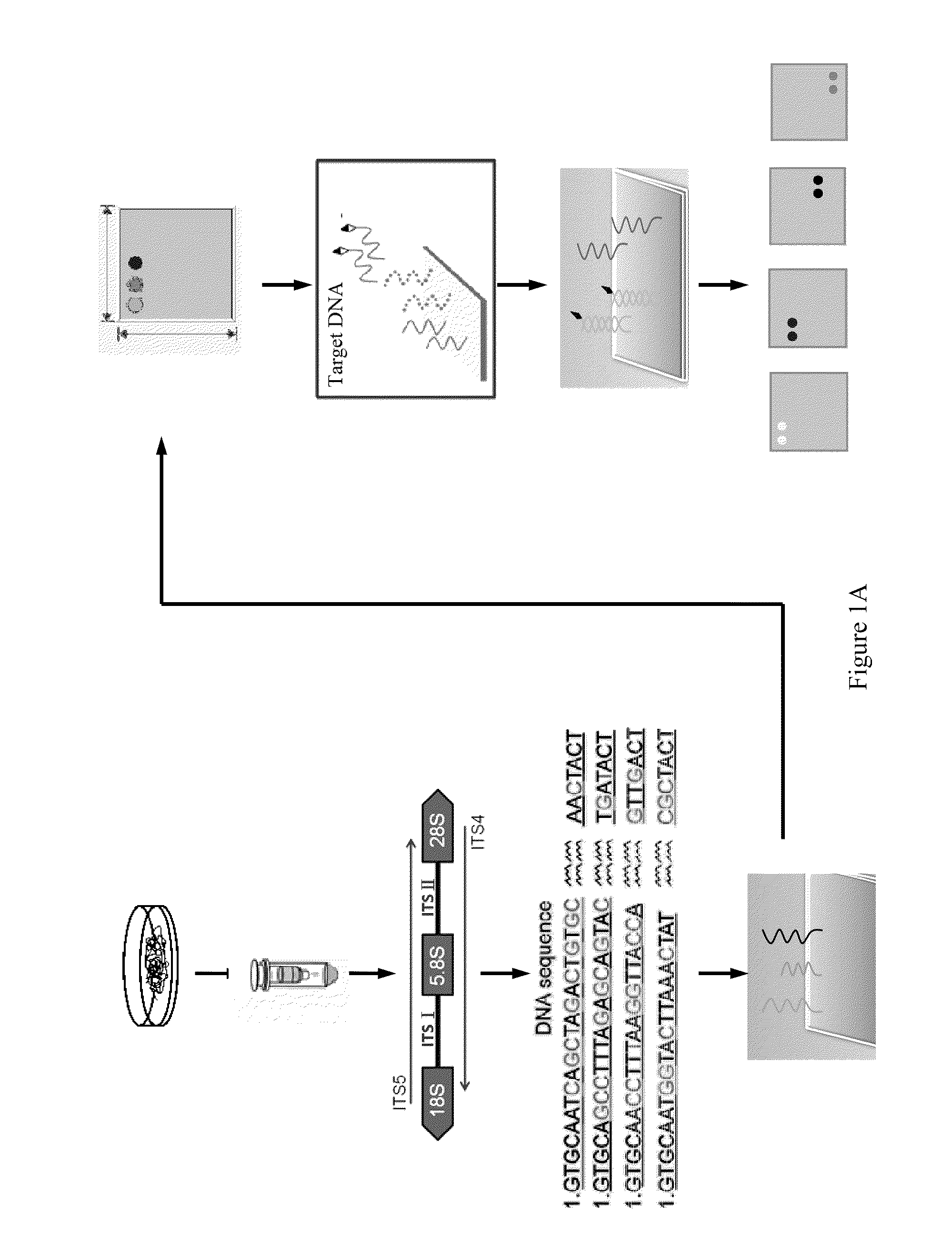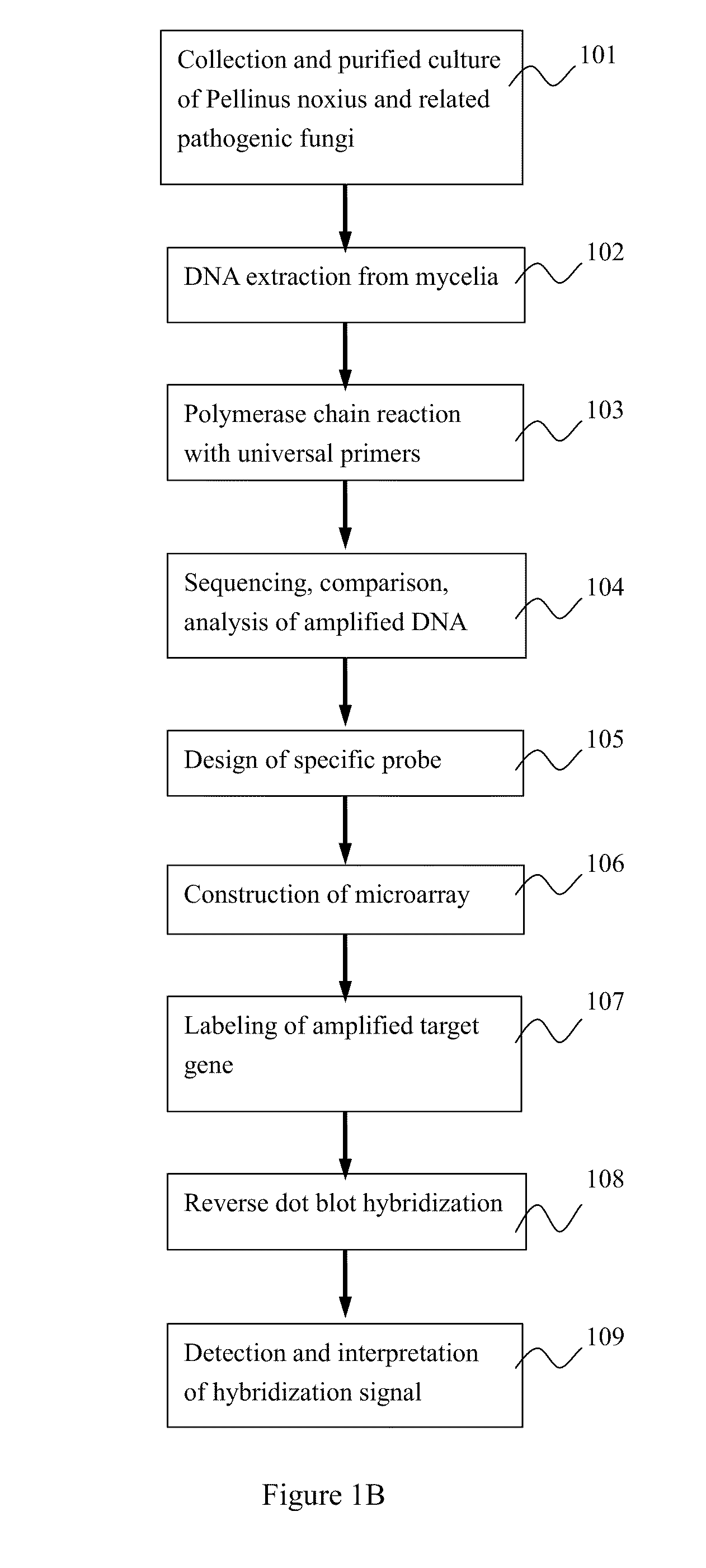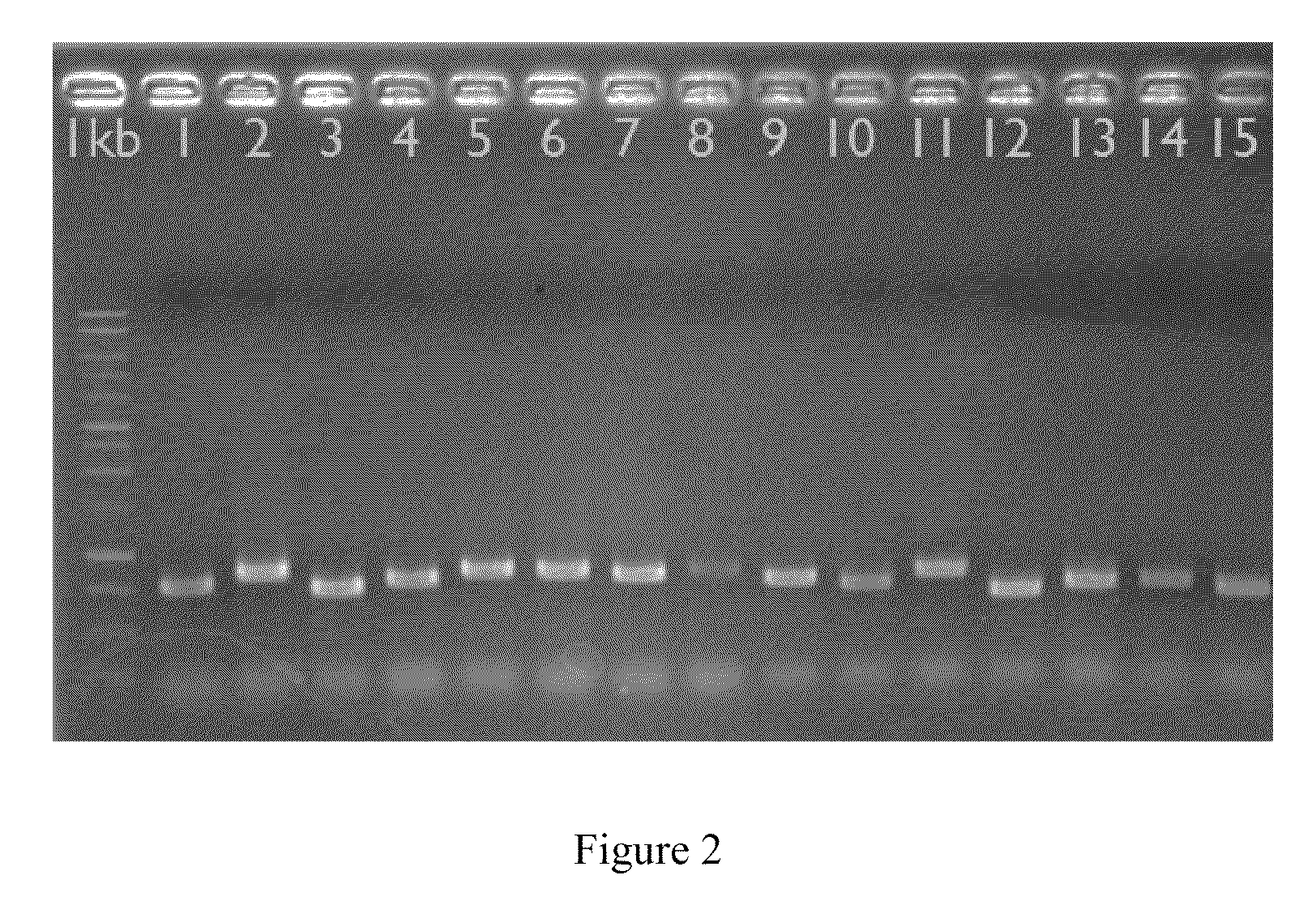Microchip for identifying phellinus species and the method thereof
a microchip and phellinus technology, applied in the field of dna microchips for identifying fungal species, can solve the problems of mass mortality of forests, tissue degradation and decay, and the drying out of whole plants, and achieve the effects of rapid diagnosis and identification, less time consumption, and high accuracy
- Summary
- Abstract
- Description
- Claims
- Application Information
AI Technical Summary
Benefits of technology
Problems solved by technology
Method used
Image
Examples
example 1
Collection of Fungal Species for Experiment and Purified Culture
[0040]Reference is made to FIGS. 1 (A) and (B). FIG. 1 (A) shows a diagram of designing the probes according to the present invention and constructing and employing the microchip; FIG. 1 (B) shows a process flow diagram corresponding to FIG. 1 (A)
[0041]First of all, collection and purified culture of Phellinus noxius and related pathogenic fungi were carried out (Step 101).
Fungal Strains for Experiment
[0042]The fungal strains used in this embodiment according to the present invention included but were not limited to the seventeen reference strains listed in Table 1. They were all the members of Phellinus: P. apiahynus (BCRC 35468), P. cesatii (BCRC 35431), P. gilvus (BCRC 35458), P. linteus (TFRI 1100), P. inrmis (BCRC 35430), P. laevigatus (BCRC 35495), P. melleoporus (BCRC 35429), P. membrance (BCRC 35411), P. noxius (BCRC 35248), P. pini (BCRC 35348), P. quercinus (BCRC 35352), P. ribis (BCRC 35326), P. formosanus (T...
example 2
Amplification and Sequencing of 18S-28S Ribosomal DNA ITS Region
[0044]First of all, the mycelia obtained in Step 101 were submitted to mycelia DNA extraction (Step 102), and the method thereof was shown as follows:
[0045]About 0.1 g of mycelia was scraped off from a culture plate and placed into an Eppendorf tube 500 μl of CTAB buffer (including 2% CTAB, 1.4M NaCl, 20 mM EDTA, 100 mM Tris (pH 8) and 2% PVP-40) (it is required to preheat at 65° C.) were then added. The mixture was further ground by a tissue grinder. After grinding, 3 μl of 2-mercaptoethanol were added. The mixture was well shaken and mixed and then let stand at 65° C. for 10 to 20 mM 500 μl of CI (chloroform:isoamylalcohol=24:1) were added subsequently and the sample was mixed by gently inverting the Eppendorf tube several times and then centrifuged at 13,200 rpm for 2 min. After centrifugation, the supernatant (about 500 μl) was transferred to a fresh Eppendorf tube. 300 μl (0.6-fold volume) of isopropanol were added...
example 3
Design of Oligonucleotide Probes
[0051]As mentioned above, the EasyPure PCR Clean Up / Gel Extraction kit (BIOMAN, Scientific Co., Ltd.) was employed to purify DNA products directly after the PCR amplification or after gel cutting following electrophoresis. The purified DNA product was then cloned into pGEM-T Easy vector (Promega, WI, USA) and ligated in accordance with the user manual provided by the manufacturer. The ligated product was further transformed into E. coli DH5α. Subsequently, the successfully transformed clone was chosen using blue-white colony selection (Sambrook and Russell, 2001) and submitted to the colony PCR for reconfirmation. The clone following confirmation was directly used for sequencing.
[0052]Following T-A cloning, the clone underwent sequencing for which an automated DNA sequencer (Applied Biosystems, ABI 3730, Taipei, Taiwan) using BigDye Terminators for fluorescent labeling was employed. Approximately a 1 kb length of each sample automatically interpreted ...
PUM
| Property | Measurement | Unit |
|---|---|---|
| volume | aaaaa | aaaaa |
| volume | aaaaa | aaaaa |
| volume | aaaaa | aaaaa |
Abstract
Description
Claims
Application Information
 Login to View More
Login to View More - R&D
- Intellectual Property
- Life Sciences
- Materials
- Tech Scout
- Unparalleled Data Quality
- Higher Quality Content
- 60% Fewer Hallucinations
Browse by: Latest US Patents, China's latest patents, Technical Efficacy Thesaurus, Application Domain, Technology Topic, Popular Technical Reports.
© 2025 PatSnap. All rights reserved.Legal|Privacy policy|Modern Slavery Act Transparency Statement|Sitemap|About US| Contact US: help@patsnap.com



